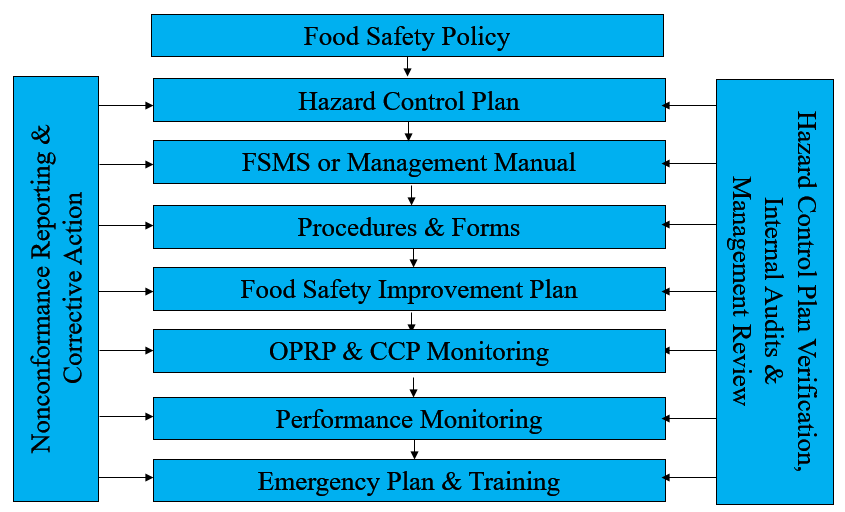ISO 22000 - Food Safety Management System
ISO 22000 for Food Safety Management Systems requires organisations to adopt a risk based approach to food safety. Now based on the same Higher Level Structure that all ISO management system standards follow, ISO 22000 combines the principles of ISO 9001 for quality management systems and Hazard Analysis and Critical Control Point (HACCP) with internationally accepted, industry based pre-requisite programs.
ISO 22000 identifies food safety requirements for organisations within the food and beverage industry chain to address and then implement a food safety management system by identifying, assessing and controlling potential hazards to food safety.
ISO 22000 identifies food safety requirements for organisations within the food and beverage industry chain to address and then implement a food safety management system by identifying, assessing and controlling potential hazards to food safety.
Food Safety Management System Requirements
A Food Safety Management System (FSMS) requires organisations to:
- understand external & internal issues, and interested parties, relevant to food safety
- develop a Food Safety Policy – typically one page document declaring commitment to food safety
- appoint a Food Safety Team
- develop a Hazard Control Plan
- develop a FSMS or Management Manual briefly addressing the clauses of ISO 22000
- implement food safety practices to address the respective pre-requisite program (PRP)
- develop procedures, particularly for each of the critical control points (CCPs) and operational pre-requisite programs (OPRPs)
- implement record keeping for monitoring of the CCPs and OPRPs
- develop and monitor food safety objectives and targets
- embrace food safety risks and opportunities, and consider the need for a Food Defence Plan and Food Fraud Vulnerability Plan
- monitor food safety performance
- plan responses to food safety emergencies
- ensure staff are competent and understand their food safety responsibilities
- control food safety nonconformances and take corrective action for significant or repetitive nonconformances
- ensure internal and external communication of food safety issues
- implement evaluation and monitoring of external providers
- implement verification of the Hazard Control Plan and PRPs
- conduct internal audits of the food safety management system
- ensure senior management strategically review the food safety management system.
Documentation Requirements
- Food Safety Policy
- Hazard Control Plan
- FSMS or Management Manual
- Procedures
- Food Safety Improvement Plan (monitoring food safety objectives and targets)
- Emergency Plan
- Records for OPRP & CCP monitoring
- Registers for nonconformances and corrective action.
Implementing a Food Safety Management System
Benefits of a Food Safety Management System
- demonstrated due diligence
- meeting regulatory and customer requirements
- enhanced company profile and reputation, and stakeholder confidence
- greater marketing opportunities leading to higher profits
- enhanced food safety in supply chain
- minimised risk and food safety related incidents
- improved food safety performance
- greater protection from spurious food poisoning allegations
- food safety culture embedded and employees empowered
- easily integrated with other management systems.
TQCSI Certification Process
- contact your TQCSI Office and ask for a quote or apply on-line - TQCSI will need to know what your business does and how many employees (full time equivalent)
- to prevent delays, don’t wait until your Food Safety Management System is fully implemented.
Certification Mark
Need Help?
Contact us here.


